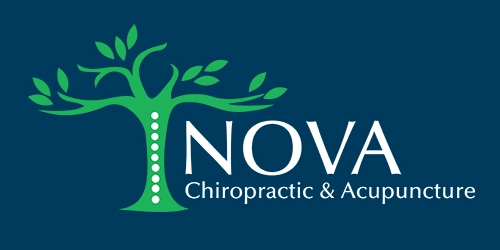Understanding Shockwave Therapy in Burke VA: Radial vs. Focused for Chronic Pain Relief
Understanding Shockwave Therapy in Burke VA: Radial vs. Focused for Chronic Pain Relief

Chronic pain can be a debilitating experience, impacting every aspect of your life, from daily activities to overall well-being. Conditions like plantar fasciitis, tennis elbow, hip pain, and knee pain are common culprits, often leading to frustration and a seemingly endless search for effective treatment. If you've been exploring options beyond traditional therapies, you may have come across 'shockwave therapy.' But what exactly is it, and more importantly, can it help your specific condition? This comprehensive guide will delve into the world of shockwave therapy in in Burke VA, demystifying its two primary forms – radial and focused – and helping you understand which might be the better choice for your journey toward pain relief and improved mobility.
Key Takeaways
- Shockwave Therapy Basics: Extracorporeal Shockwave Therapy (ESWT) uses acoustic waves to stimulate healing in musculoskeletal tissues, reduce pain, and improve function.
- Two Main Types: Radial Shockwave Therapy (RSWT) and Focused Shockwave Therapy (FSWT) differ in how the waves are generated, their penetration depth, and energy delivery.
- Radial Shockwave (RSWT): Delivers lower energy, more superficial waves that spread radially. Often used for broader areas and conditions closer to the skin surface.
- Focused Shockwave (FSWT): Delivers higher energy, precise waves that converge at a specific depth. Ideal for deeper tissues and more localized, chronic conditions.
- Mechanism of Action: Both types promote healing by stimulating blood flow, cellular regeneration, and reducing pain signals through various biological responses.
- Conditions Treated: ESWT is effective for chronic conditions like plantar fasciitis, tennis elbow, hip pain (e.g., gluteal tendinopathy), and knee pain (e.g., osteoarthritis, tendinopathies).
- Considerations: The choice between radial and focused depends on the specific condition, its location, severity, and individual patient factors. A qualified healthcare professional can determine the most appropriate treatment.
- Safety and Side Effects: Generally safe with minor, temporary side effects such as localized pain, swelling, or bruising. Contraindications include pregnancy, blood clotting disorders, and certain medical implants.
What is Shockwave Therapy?
Extracorporeal Shockwave Therapy (ESWT) is a non-invasive treatment that uses acoustic waves to stimulate healing in musculoskeletal tissues. These 'shockwaves' are not electrical shocks, but rather high-energy sound waves that are generated outside the body and then transmitted into the affected tissues. The concept originated from lithotripsy, a medical procedure used to break down kidney stones, but its application has since expanded to orthopedics and rehabilitation due to its remarkable ability to promote tissue regeneration and reduce pain.
The fundamental principle behind ESWT lies in its ability to induce a controlled microtrauma within the targeted tissue. This microtrauma triggers a cascade of biological responses, including increased blood circulation, stimulation of metabolic activity, and activation of the body's natural healing mechanisms. It can also help break down calcifications and scar tissue, which often contribute to chronic pain and limited mobility. The therapy essentially kick-starts the body's innate capacity to repair itself, leading to pain reduction and improved function over time.
Radial Shockwave Therapy (RSWT)
Radial Shockwave Therapy (RSWT), also known as Radial Pressure Wave Therapy (RPWT), utilizes a different method of wave generation and delivery compared to focused shockwave therapy. In RSWT, a projectile is accelerated by compressed air within a handpiece, striking an applicator head. This impact generates a kinetic energy that is then converted into a radial pressure wave, which propagates outwards into the tissue.
Characteristics of Radial Shockwaves:
- Wave Propagation: Radial waves diverge as they enter the tissue, meaning the energy is spread over a larger, more superficial area. The highest energy is at the point of contact with the skin, and it decreases rapidly with depth.
- Energy Level: RSWT typically delivers lower energy levels compared to FSWT. The pressure peak is generally in the range of 0.1-1.0 Mega-Pascals (MPa).
- Penetration Depth: Due to their divergent nature, radial waves have a shallower penetration depth, usually effective up to 3-4 cm into the tissue.
- Mechanism of Action: While the exact mechanisms are still being researched, RSWT is believed to primarily work through mechanotransduction. This involves the mechanical stimulation of cells, leading to biological responses such as increased blood flow, activation of fibroblasts (cells crucial for connective tissue healing), and a reduction in pain signals. The mechanical stimulation can also help break down adhesions and scar tissue, improving tissue elasticity and reducing tension.
Typical Applications: RSWT is often preferred for more superficial conditions and broader areas of pain. Common applications include:
- Plantar Fasciitis: For pain in the heel and arch of the foot.
- Tennis Elbow (Lateral Epicondylitis): For pain on the outside of the elbow.
- Achilles Tendinopathy: For pain in the Achilles tendon.
- Shoulder Pain: Including rotator cuff tendinopathies.
- Trigger Points: To release muscle tension and knots.
RSWT is generally well-tolerated, and treatments are often quicker than FSWT. It is a popular choice for many musculoskeletal conditions due to its effectiveness and relatively low cost compared to focused shockwave therapy.
Focused Shockwave Therapy (FSWT)
Focused Shockwave Therapy (FSWT) generates shockwaves differently and delivers them with greater precision and energy. Unlike radial waves, focused shockwaves are generated by an electromagnetic, piezoelectric, or electrohydraulic source. These devices convert electrical energy into mechanical pressure waves that are then focused at a specific point within the body, similar to how a magnifying glass focuses sunlight.
Characteristics of Focused Shockwaves:
- Wave Propagation: Focused waves converge at a precise depth within the tissue, delivering a concentrated burst of energy at the target site. This allows for treatment of deeper structures without affecting superficial tissues as much.
- Energy Level: FSWT delivers significantly higher energy levels than RSWT, with pressure peaks typically ranging from 10-100 MPa. This higher energy allows for more potent biological effects at the focal point.
- Penetration Depth: FSWT can reach greater depths, often up to 12 cm or more, making it suitable for conditions affecting deeper joints, tendons, and bones.
- Mechanism of Action: The higher energy and precise focus of FSWT lead to more intense biological responses. These include neovascularization (formation of new blood vessels), stimulation of bone and tendon healing, breakdown of calcifications, and a strong analgesic (pain-relieving) effect through nerve overstimulation. The cavitation effect, where microbubbles form and collapse, is also more pronounced with FSWT, contributing to its therapeutic effects.
- Typical Applications: FSWT is often chosen for chronic, deep-seated conditions that require a more targeted and intense therapeutic effect. Common applications include:
- Chronic Plantar Fasciitis (especially resistant cases)
- Non-Union Fractures
- Osteoarthritis (knee and hip)
- Calcific Tendinopathy
- Deep Hip Pain
FSWT treatments are typically more expensive and may require fewer sessions due to the higher energy delivery. The precision of FSWT allows for targeted treatment of specific pathologies, making it a powerful tool for complex chronic conditions.
Radial vs. Focused Shockwave Therapy In Burke VA: Which is Better for My Condition?
The choice between radial and focused shockwave therapy is not about one being inherently better than the other, but rather about which is more appropriate for your specific condition. The decision is based on several factors, including the nature of the injury, its location, its chronicity, and the desired depth of penetration.
| Feature | Radial Shockwave Therapy (RSWT) | Focused Shockwave Therapy (FSWT) |
| Wave Type | Pressure wave (divergent) | Acoustic shockwave (convergent) |
| Generation | Pneumatic (projectile impact) | Electromagnetic, Piezoelectric, or Electrohydraulic |
| Energy Level | Lower (0.1–1.0 MPa) | Higher (10–100 MPa) |
| Penetration | Superficial (up to 3–4 cm) | Deep (up to 12 cm or more) |
| Focus | Broad, diffuse application | Precise, targeted focal point |
| Sensation | More diffuse, less intense pain | More intense, localized pain during treatment |
| Treatment Area | Larger, more superficial areas | Smaller, deeper, more localized areas |
| Cost | Generally less expensive per session | Generally more expensive per session |
| Typical Uses | Tendinopathies (Achilles, patellar, tennis elbow), plantar fasciitis, muscle pain, trigger points, broader soft tissue issues | Chronic plantar fasciitis, non-union fractures, calcific tendinopathies, deep hip/knee pain, severe chronic conditions |
When to Consider Radial Shockwave Therapy:
RSWT is often the first line of shockwave treatment for many musculoskeletal conditions, especially those that are more superficial or involve a broader area of pain. If your pain is widespread, closer to the skin, or if you are new to shockwave therapy, RSWT might be a suitable starting point. It's particularly effective for conditions like tennis elbow and plantar fasciitis, where the affected tissue is relatively accessible.
When to Consider Focused Shockwave Therapy:
FSWT is typically reserved for more chronic, stubborn conditions that haven't responded to other treatments, or for injuries located deep within the body. Its ability to deliver a concentrated, high-energy impulse to a precise location makes it ideal for breaking down calcifications, stimulating bone healing, and addressing deep-seated tendinopathies or osteoarthritis. If your condition is severe, deeply located, or has been persistent despite other interventions, FSWT may offer a more potent solution.
Ultimately, the decision should be made in consultation with a qualified healthcare professional, such as a chiropractor, physical therapist, or orthopedic specialist. They will assess your specific condition, consider your medical history, and recommend the most appropriate type of shockwave therapy, or a combination of both, to achieve the best possible outcome.
Shockwave Therapy for Specific Chronic Injuries
Shockwave therapy has emerged as a promising non-invasive treatment option for a variety of chronic musculoskeletal conditions. Its ability to stimulate healing, reduce pain, and improve function makes it a valuable tool in the management of persistent injuries. Let's explore how shockwave therapy can benefit common chronic conditions:
Plantar Fasciitis
Plantar fasciitis is one of the most common causes of heel pain, characterized by inflammation of the plantar fascia, a thick band of tissue that runs across the bottom of your foot and connects your heel bone to your toes. This condition can cause sharp, stabbing pain, especially with the first steps in the morning or after periods of rest. Shockwave therapy, particularly focused ESWT, has shown significant efficacy in treating chronic plantar fasciitis.
How it Helps: ESWT works by promoting neovascularization (formation of new blood vessels) in the plantar fascia, which improves blood supply and nutrient delivery to the injured tissue, accelerating healing. It also helps to break down calcifications and scar tissue that can form within the fascia, reducing tension and inflammation. Furthermore, the analgesic effect of shockwaves helps to desensitize pain receptors, providing significant pain relief. Studies have demonstrated that ESWT can reduce pain intensity and improve functional outcomes in patients with chronic plantar fasciitis, often leading to long term relief.
Tennis Elbow (Lateral Epicondylitis)
Tennis elbow, or lateral epicondylitis, is a painful condition affecting the tendons on the outside of the elbow, often caused by repetitive wrist and arm motions. Despite its name, it affects many individuals who don't play tennis, including manual laborers, painters, and computer users. Shockwave therapy is a well-established treatment for chronic tennis elbow, especially when conservative treatments have failed.
How it Helps: ESWT stimulates the repair of damaged tendons by promoting collagen synthesis and improving blood flow to the affected area. The mechanical stress from the shockwaves encourages cellular regeneration and helps to reorganize the collagen fibers, leading to stronger, healthier tendon tissue. It also has a direct pain-relieving effect by modulating pain signals and reducing inflammation in the affected tendons. Research indicates that ESWT can significantly reduce pain and improve grip strength and overall function in individuals suffering from chronic tennis elbow. Both radial and focused shockwave therapies have shown effectiveness, with the choice often depending on the chronicity and severity of the condition.
Hip Pain (e.g., Gluteal Tendinopathy)
Hip pain can stem from various sources, but a common cause is gluteal tendinopathy, an overuse injury affecting the tendons of the gluteal muscles around the hip. This condition can cause pain on the outside of the hip, often worsening with activity or lying on the affected side. Shockwave therapy offers a non-surgical approach to address chronic hip pain, particularly tendinopathies.
How it Helps: For hip tendinopathies, ESWT works by stimulating cellular activity and promoting the regeneration of damaged tendon fibers. The increased blood flow and metabolic activity facilitate the healing process, while the mechanical effects of the shockwaves help to break down any calcifications or adhesions that may be contributing to the pain. Studies have shown that ESWT can lead to significant pain reduction and improved function in patients with gluteal tendinopathy, with long-term positive outcomes. Focused shockwave therapy is often preferred for deeper hip structures, allowing for precise targeting of the affected tendons.
Knee Pain (e.g., Osteoarthritis, Tendinopathies)
Knee pain is a widespread complaint, often resulting from conditions like osteoarthritis (OA) or various tendinopathies (e.g., patellar tendinopathy, quadriceps tendinopathy). Osteoarthritis involves the degeneration of cartilage in the knee joint, leading to pain, stiffness, and reduced mobility. Tendinopathies are characterized by inflammation or degeneration of the tendons around the knee. Shockwave therapy has emerged as a viable treatment option for both.
How it Helps: In knee osteoarthritis, ESWT can help reduce pain and improve joint function by stimulating cartilage regeneration, reducing inflammation, and promoting the repair of surrounding soft tissues. It can also help to improve blood circulation within the joint, which is crucial for healing. For knee tendinopathies, similar to tennis elbow, shockwaves promote tendon repair and reduce pain by stimulating collagen production and improving local blood flow. Clinical studies have demonstrated that ESWT can effectively alleviate pain and improve mobility in patients with knee OA and tendinopathies, offering a noninvasive alternative to more aggressive interventions.
Frequently Asked Questions (FAQs)
- Is Shockwave Therapy painful?
During the treatment, you may experience some discomfort or mild pain, which is usually well-tolerated. The intensity of the sensation can vary depending on the area being treated and the type of shockwave therapy (focused tends to be more intense than radial). Most patients describe it as a deep, aching sensation. The discomfort typically subsides shortly after the treatment session. - How many sessions will I need?
The number of sessions required varies depending on the condition being treated, its severity, and your individual response to therapy. Typically, a course of shockwave therapy involves 3 to 6 sessions, spaced 7 to 10 days apart. Your healthcare provider will develop a personalized treatment plan based on your specific needs. - Are there any side effects?
Shockwave therapy is generally considered safe, with most side effects being mild and temporary. These can include localized pain, redness, swelling, bruising, or numbness at the treatment site. These effects usually resolve within a few days after the session. Serious side effects are rare. - Who is not a candidate for Shockwave Therapy?
While generally safe, shockwave therapy is not suitable for everyone. Contraindications include pregnancy, blood clotting disorders, taking anticoagulant medications, presence of a tumor or infection in the treatment area, open wounds, or treatment over air-filled tissues (like lungs or gut). It is also generally not recommended for individuals with certain medical implants in the treatment area. A thorough medical evaluation by a qualified professional is essential to determine if shockwave therapy is appropriate for you. - How soon will I see results?
Some patients experience immediate pain relief after the first session, while others may notice gradual improvement over several weeks or months as the body's healing processes are stimulated. The full benefits of shockwave therapy are often realized a few weeks to a few months after the completion of the treatment course. - Can I combine Shockwave Therapy with other treatments?
Yes, shockwave therapy can often be effectively combined with other conservative treatments, such as physical therapy, chiropractic adjustments, stretching exercises, and strengthening programs. In fact, combining therapies can often enhance outcomes and accelerate recovery. Your healthcare provider will guide you on the best integrated treatment approach for your condition.
Conclusion
Shockwave therapy, in both its radial and focused forms, represents a significant advancement in the non-invasive treatment of chronic musculoskeletal pain. By harnessing the power of acoustic waves, these therapies stimulate the body's natural healing processes, reduce pain, and improve function, offering a beacon of hope for individuals suffering from persistent conditions like plantar fasciitis, tennis elbow, hip pain, and knee pain. The key to successful treatment lies in understanding the distinct characteristics of radial and focused shockwaves and, more importantly, in receiving a personalized assessment from a qualified healthcare professional. They can accurately diagnose your condition, determine the most appropriate type of shockwave therapy, and integrate it into a comprehensive treatment plan tailored to your unique needs. If you're living with chronic pain and seeking effective, non-surgical solutions, exploring shockwave therapy with your healthcare provider could be the next crucial step on your journey to lasting relief and a return to an active, pain-free life.
References
- https://www.physio-pedia.com/Extracorporeal_Shockwave_Therapy
- https://www.sciencedirect.com/science/article/abs/pii/S0976566220300631
- https://pmc.ncbi.nlm.nih.gov/articles/PMC7275282/
- https://www.vennhealthcare.com/radial-vs-focus-shockwave-therapy-what-is-the-difference/
- https://enovis-medtech.eu/blog_eu/?p=1403
- https://www.physiquipe.com/news/what-is-radial-shockwave-therapy/
- https://remingtonmedical.com/blogs/blog/radial-shockwave-therapy-vs-focused-shockwave-therapy-understanding-the-difference?srsltid=AfmBOorvxCMSZwWK63De8cRho02ZLH8L_MJpK6lYLyVP9qNkbRxYaf
- https://cospineandjoint.com/focused-shockwave-therapy-chronic-plantar-fasciitis-relief/
- https://www.regenmedpc.com/post/exploring-the-efficacy-of-shockwave-therapy-as-an-alternative-treatment-for-osteoarthritis-oa
- https://www.sciencedirect.com/science/article/abs/pii/S0972978X20401594
- https://www.mdpi.com/2075-1729/14/12/1698
- https://trialsjournal.biomedcentral.com/articles/10.1186/s13063-020-04510-z
- https://www.sciencedirect.com/science/article/pii/S0033999312001608
- https://journals.lww.com/md-journal/fulltext/2017/04140/extracorporeal_shock_wave_therapy_is_effective_in.44.aspx
- https://www.healthline.com/health/shock-wave-therapy-for-plantar-fasciitis
- https://pmc.ncbi.nlm.nih.gov/articles/PMC7006537/
- https://pmc.ncbi.nlm.nih.gov/articles/PMC7106907/
- https://pmc.ncbi.nlm.nih.gov/articles/PMC6421473/
- https://shock-wave-therapy-london.co.uk/blog/43-does-shockwave-therapy-work-for-tennis-elbow
- https://frontlinechiropractor.com/healing-hip-pain-the-role-of-shockwave-therapy/
- https://www.mdpi.com/2075-1729/14/12/1698
- https://cospineandjoint.com/shockwave-therapy-knee-pain-treatment/
- https://www.sciencedirect.com/science/article/abs/pii/S0972978X20401594
- https://pmc.ncbi.nlm.nih.gov/articles/PMC1056966/
- https://www.medicaljournals.se/jrm/content/html/10.2340/16501977-2782
- https://prime-spine.com/shockwave-therapy-risks-and-side-effects/
- https://www.orthohealing.com/the-side-effects-of-shockwave-therapy/
- https://www.medicalnewstoday.com/articles/extracorporeal-shockwave-therapy
- https://softwavetrt.com/shockwave-therapy-contraindications/
- https://www.webmd.com/pain-management/what-is-shockwave-therapy
Monday
7:00am - 12:00pm
1:00pm - 5:00pm
Tuesday
7:00am - 12:00pm
1:00pm - 5:00pm
Wednesday
7:00am - 12:00pm
1:00pm - 5:00pm
Thursday
7:00am - 12:00pm
1:00pm - 5:00pm
Friday
Closed
Saturday & Sunday
Closed
NOVA Chiropractic & Acupuncture
5288 Lyngate Ct
Burke, VA 22015




